Here at 25YLSite, we handle a lot of heavy lifting. Analysis, interpretation, deep discussion, introspective interviews… you name it, we’ve got it. “Favorites” takes a lighter approach to the material we normally cover. Each week, we will take you through a list of favorites – whether it’s moments, scenes, episodes, characters, lines of dialogue, whatever! – in bite-sized articles perfect for your lunch break, a dull commute, or anywhere you need to take a Moment of Zen. So, sit back and enjoy this week’s offering: Ben’s Top 5 Classic and Modern Westerns.
The Western genre is very much a love or hate situation. I absolutely love a good Western, and even a bad one at times too. My wife, however, hates them. Yet despite this, they have been around for decades and refuse to die. Born out of the wonder and excitement that came from the American West, as stories of gold rushes and outlaws spread and captivated minds, the early twentieth century was flooded with the damn things. Nowadays, there’s fewer being made, but being made they still are, and there is still a great hunger for them amongst moviegoers.
There is a damn fine argument to be made for whether the golden age of Westerns trumps the modern Western, but I want to focus on something a little more neutral. I’m a lover of Westerns new and old, and since some of my favourites were made half a century apart, I thought it would be more fun to compile separate lists of my favourite classic and favourite modern Westerns.
Now, let’s lay a few ground rules here. When I say Western, I mean the film has to be set in the latter half of the nineteenth century. None of those pesky neo-westerns will be making it on to this list, no sir! Next, how does one define the line between classic and modern? You have to draw a line somewhere. For the purposes of this list, I’m going to draw the line across 1990. It’s true enough that some may refer to nineties films as classic, but I was alive in the nineties and it really wasn’t that long ago. When someone says such-and-such happened in 2001, it still feels like it was only a handful of years ago. Who’s with me on that?
Anyway, let’s kick off the list with the newbies, and move on to the golden greats later.
Modern Western #5: Seraphim Falls (2006)
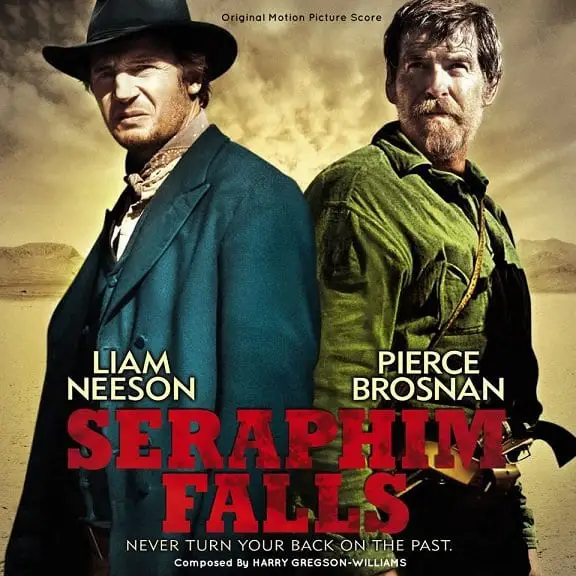
Led by two of the most unlikely actors for a Western movie, Pierce Brosnan and Liam Neeson, Seraphim Falls is not amongst the most revered Westerns of all time, but it is one I hold very dear. At its heart, Seraphim Falls is the chase movie of the late nineteenth century that you all need to see. Devoid of growling muscle cars, Seraphim Falls tells the story of a worn-out Union officer (Brosnan) pursued by a gritty, unforgiving Confederate Colonel (Neeson). The movie has no lead-in to what the hell is going on; we just see Brosnan getting shot and that’s it—the chase is on. The rest of the movie is Brosnan using any means necessary to get as far away from the murderous Neeson, who will seemingly stop at nothing and doesn’t care who he has to kill to get his revenge.
There really isn’t a great deal of dialogue in this film and I think that is where some of its strengths come in. The suspense never lets up, you never know where Neeson is going to pop up, and you never know if Brosnan is going to survive the next encounter. Right up to the very end, you really don’t know which way it’s going to go. And believe me when I say, you wont see it coming.
Modern Western #4: Forsaken (2015)

Again, not high up on most people’s lists, Forsaken is a very Sutherland affair. The film stars the father and son legends, Donald and Kiefer Sutherland, whose characters have the same relationship in the movie. Commissioned by Kiefer and directed by John Cassar (Kiefer’s longtime partner on the television show 24), Forsaken is the humble tale of a soldier who returns home looking for some peace from the demons of his killing past, and to rekindle the relationship between him and his father.
John Henry, played by Kiefer, has been away from town for many years. The relationship with his father is broken down, and his childhood sweetheart is long since married. He tries to forge an honest life for himself on his family homestead, but a fierce gang led by the mighty Brian Cox threatens the peace.
Forsaken does not take itself too seriously and it does not try to be bigger than it is, which is a huge plus point for me. The film has generally negative reviews on the Internet, but I feel they rather miss the point. It has everything one expects from a classic Western tale as well as solid acting from all involved, solid direction from Cassar, a classic Western story line brought into the modern era, and some good old-fashioned gunfighting. What’s not to love?
Modern Western #3: Unforgiven (1992)
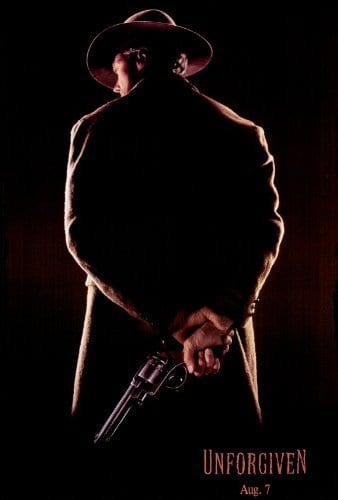
Unforgiven has been widely touted as the best Western of all time, as well as the best Western of Clint Eastwood’s career. Its plot is not too dissimilar from Forsaken: a retired killer persuaded out of his peaceful retirement to kill one last group of wrongdoers. (I’ve simplified its plot a little here, but I don’t want to spoil the film for anyone left out there who hasn’t seen it.)
Eastwood directs in what was to be his swan song in the Western genre, and what a swan song it was. The writing and the acting in this film are phenomenal. We all know by now that Clint Eastwood is an excellent movie director, and this film has certainly got to be one of his best. It features a fantastic lineup, including Eastwood as the main character of Will Munny, Gene Hackman, Morgan Freeman, and Richard Harris, to name a few who all give stellar performances.
Unforgiven is action-packed, humbling, and heartbreaking, and it cements Clint Eastwood as one of the greatest movie bad-asses of all time. As far as the classic story lines go (i.e. good guy has to take out rival bad guy/gang to save the town), this is easily the best and most well-realised version of it.
Modern Western #2: Dances with Wolves (1990)
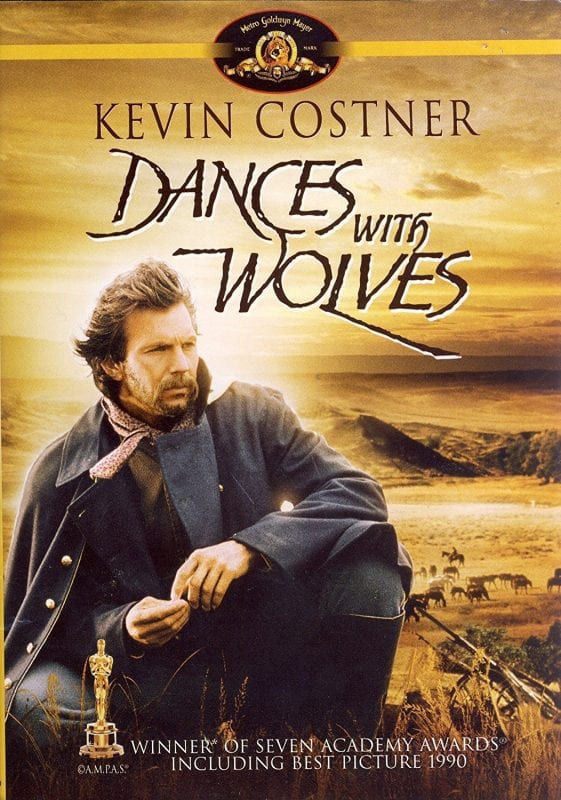
I toyed with the idea of not including Civil War movies in this list and only including those of the “Cowboys and Indians” variety, but eventually came to the conclusion that whether or not a Western is about the Civil War, there are countless Westerns that feature it to some degree, regardless of the story being told.
Dances with Wolves then is not only one of the greatest Westerns ever made, but one of the greatest films ever made period. It is an utter travesty that the complete extended edition is not available for me in the UK on anything other that plain old DVD, but I won’t go there.
Dances with Wolves is based on the book of the same name by Michael Blake, who adapted his book for the film. Kevin Costner starred in, produced, and directed the final product in one of his absolute finest performances, both behind and in front of the camera. This film is so far away from the “gunfights in the muddy thoroughfare” style of Western that it’s almost unrecognisable as being in the same category, but it is set during the American Civil War, on the western frontier, and therefore it fits the criteria and makes it on to my list.
It follows the story of Lieutenant John Dunbar (Costner) who, after being awarded for bravery in battle, gets to choose his next assignment. He opts to be assigned to the frontier as he wants to see it before it is gone. He is sent to Fort Hays and his new commander sends him off to the furthest point on the frontier before coming to an untimely end. The man Dunbar travels to the post with is also killed on his journey back and thus Costner is left on his own, seemingly with no hope of relief and totally forgotten by the army. I won’t delve too much into the meat of the story, except to say that Dunbar becomes involved with a tribe of Lakota peoples and the white woman they have adopted as their own.
The beauty of this film comes from the interactions between Dunbar and the native people. It all seems so far away from modern society, a world almost untouched and completely unexplored. It’s like watching two alien races meet for the first time, but it is pure magic on-screen. The Lakota culture is depicted so honestly and openly (in my opinion), and the performances not just by Costner but by the Lakota peoples cannot be faulted. Dances with Wolves is beautiful, and there is no other word to describe it.
Modern Western #1: Wyatt Earp (1994)

For the second time tonight, Kevin Costner makes it onto my list, making him the star of my modern Westerns roll of honour. [Yes, that’s Honour with a ‘U’ for all you folks that speak the Queen’s English.]
There were two major versions of the Wyatt Earp story released in the nineties: Wyatt Earp and Tombstone (1993). While there are aspects of Tombstone that I like more than Wyatt Earp, this film wins out when considered as a whole. For example, I much, much, much prefer Val Kilmer’s Doc Holliday to Dennis Quaid’s, which isn’t to say that Dennis didn’t give a stellar performance. Both movies have an all-star cast: Costner, Michael Madsen, Dennis Quaid, and Gene Hackman in Wyatt Earp, and Kurt Russell, Sam Elliott, Bill Paxton, and Val Kilmer in Tombstone.
What I think I prefer about Wyatt Earp is the biopic nature of it. Tombstone is an action movie centralised more on the Tombstone part of the Earp brothers’ lives, whereas Wyatt Earp starts with the young boy that would grow up to be the most infamous sheriff in the Old West. We get to see what life might have been like during his childhood. We get to see his first love and his first tragedy. We get to see the events that drive Wyatt and his family to the famous gunfight at the O.K. Corral, and all round we get a better sense of the man himself.
Don’t come here looking for three hours of pistol-whipping because that is not what this film is about. This film is much more lighthearted, yet it has a serious approach to storytelling. By the end of the movie, it really feels like you have been on a grand journey not just through the life of a great man but through history as well.
***
That rounds out the newbies, but what about the old dogs? For me, the magic of the Western comes from these old movies more so than the modern reincarnations. There were countless trashy Westerns made in the early twentieth century, but just as there was tripe, there was just as much prime filet too.
Classic Western #5: The Magnificent Seven (1960)
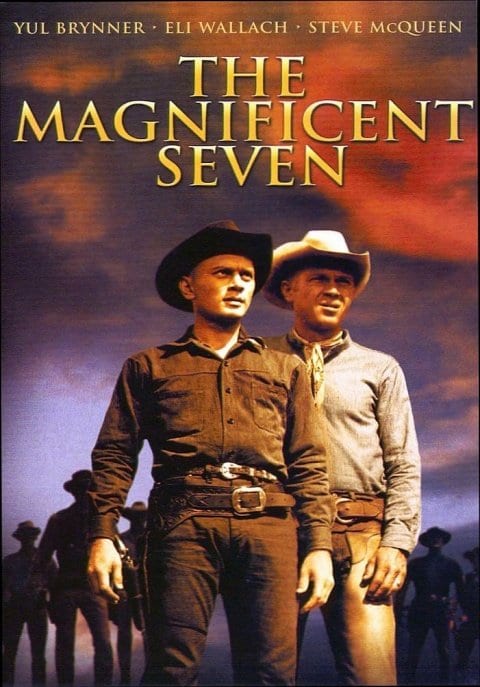
This film requires no introduction. We’ve all heard of it, it’s probably our grandmother’s favourite film, and we’ve all had that damn theme tune stuck in our heads.
The Magnificent Seven is an Old-West-styled retelling of the Akira Kurosawa film Seven Samurai. I haven’t seen Seven Samurai so I can’t comment on the similarities between the two. What I can say is that The Magnificent Seven is an action-packed Wild-West romp with what has to be the greatest posse ever assembled on screen. I mean, Yul Brynner, Steve McQueen, Charles Bronson, James Coburn—does it get any better than that? Not to mention the brilliant Eli Wallach as the bad guy, because we all know there’s only one other man from that era that can play a better villain (I’m looking at you Mr Van Cleef!).
The worlds greatest posse hired to defend a town from Eli Wallach, do you need any more excuses to watch this movie? Nope!
Classic Western #4: For a Few Dollars More (1965)

For a Few Dollars More is the middle film in Sergio Leone’s “Dollars” Trilogy, and in some respects could be described as the better of the three (or so Clint Eastwood believes). For me, the film does have strengths over the final installment in the trilogy—namely the plot and the character development—but doesn’t quite trump The Good, the Bad and the Ugly when it comes to scale and grandeur.
Eastwood and Lee Van Cleef play bounty hunters on the trail of Indio, played by Gian Maria Volontè. Although both bounty hunters are after the same prize, they reluctantly agree to work together in the end to bring down the psychotic Indio. Unlike many Westerns, the characters of Douglas Mortimer (Van Cleef) and Indio are surprisingly well realised. They have backstory that gives them a plausible motive and forces a connection between them and the viewer, which is something I rarely seem to encounter in movies this old.
Volontè plays the villain exceptionally well and pulls off the psychotic angle to a tee. The scene in the church is one of the most haunting and brutal things I have seen in a Western. Though, as I stated before, Van Cleef pulls it off better. He’s much more suave and really is my favourite likeable baddy.
For a spaghetti Western, there’s some good acting here outside of the main roles (despite the laughable overdub) and there is real emotion in the story. For me, though, the ending makes it all, and up until 1966, For a Few Dollars More had the best final standoff in movie history.
Classic Western #3: The Outlaw Josey Wales (1976)

Clint Eastwood features again here in another fantastic Western, which was made more than a decade after our previous entry in the list. The Outlaw Josey Wales was one of many of Eastwood’s acting/directorial Western projects, and arguably his best effort.
When Josey’s family is murdered by the Union, he joins a band of guerillas and ends up fighting in the Civil War. Following the war, Josey becomes an outlaw, pursued by Union soldiers and still hell-bent on revenge for his murdered family. Eastwood meets some fantastic characters along his way and takes us on a memorable journey through the Old West. There are gunfights aplenty and no shortage of Eastwood’s signature witty one-liners. He’s like a Western version of Dirty Harry, just with more hair and less flattering attire.
Joking aside, The Outlaw Josey Wales is a fantastic film, acted and directed brilliantly by an equally brilliant man, with a touching ending to suit.
Classic Western #2: Once Upon a Time in the West (1969)
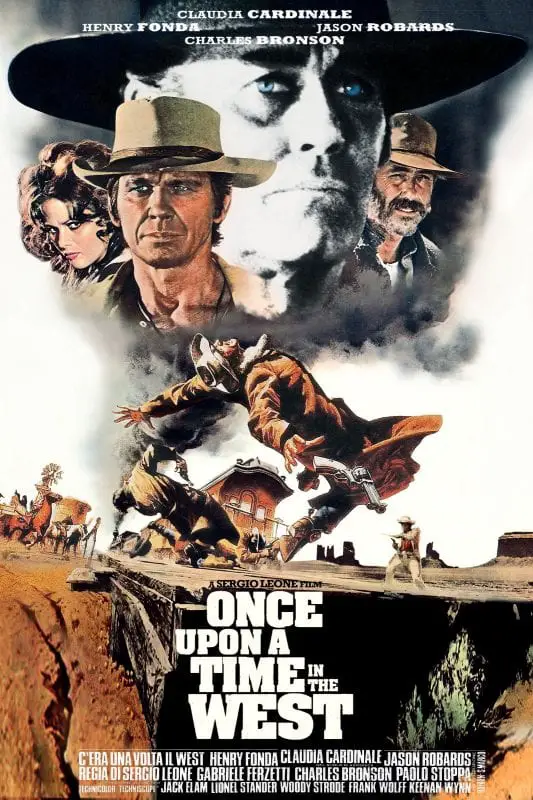
Now, I could pour on and on about this movie and the movie that pipped it to the top of my list, but for the purposes of your sanity, I will keep it to a minimum.
Freshly departed from the “Dollars” Trilogy, Sergio Leone made the epic tale that is Once Upon a Time in the West. This movie has so much to offer, but you have to commit yourself. This is far from mindless action and sub-par plot. This film is deep and holds a lot of meaning. Not only is Leone’s storytelling at its absolute best, but Ennio Morricone’s musicianship is right up there at its pinnacle too.
Once Upon a Time in the West has a battle on more than one front. It tells of the fight between two killers, one who is a stone-hearted murderer and one who merely wants justice. Henry Fonda plays the cold-blooded killer and Charles Bronson, in what for me was his best role, as his harmonica-playing rival. It also tells the tale of a railroad that is being built and is on its way to the town of Flagstone. The fight here is over a piece of land named Sweetwater, which happens to contain the only water source in the area. Knowing that the railroad would inevitably go to Sweetwater, the land was bought up in the hopes of keeping the train away. This is where Fonda comes in, hired to take out the land’s owner and free it back up for the encroaching railroad.
The picture has some of the best rivalry ever put on screen. It is also exceptionally haunting and thought-provoking, for me mainly because the railroad signals the end of the West as we know it. It might just be two iron rails moving slowly along to the next town, but the struggle put up to keep it away embodies what brought about the end of the Old West. Nothing is safe from the progress of technology.
Classic Western #1: The Good, the Bad and the Ugly (1967)
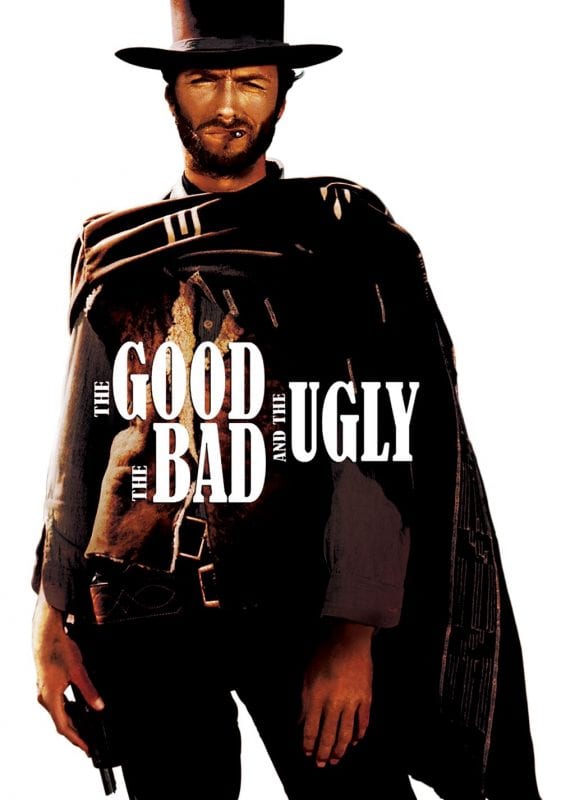
Clint Eastwood’s third appearance here (can you see a theme emerging?) is a quick step back in time from the previous entry, to the final film in Leone’s “Dollars” Trilogy. This film is essentially about a treasure hunt—three men on the hunt for buried gold. Aside from this, though, it is a journey through the West: through classic Western towns with quirky sheriffs and wanted posters, through war-torn villages brought down by artillery fire, and through the front line of the Civil War itself. If you squint your eyes enough, this film is almost a bizarre retrospective of the entire Western genre. It covers just about every locale, has its own mini war movie, has a good guy/bad guy rivalry, has plenty of gunfights, and a good bit of gold.
I don’t need to say much about this film as I’m sure there are not that many people old enough to appreciate such a masterpiece that haven’t yet seen it. It’s a long journey, and just like Once Upon a Time in the West, you have to be ready to commit. It starts out fairly fast-paced, with Eli Wallach shooting up a store, but quickly slows the pace a little as the tension builds between Wallach and Eastwood and the story of the lost gold picks up.
One great arc in the story that I feel I should mention is the portrayal of American soldiers throughout the film. Although criticised by some, there’s not much heroism here, more a wave of despair. This is a departure from the norm when it comes to most war movies and you certainly wouldn’t expect to see such an emotional angle from a Western, something which I believe goes a long way to putting this film at the top of my list. Not to mention the longest and most tense final standoff in movie history!
So there you have it, my top ten picks when it comes to modern and classic golden age Westerns. I’m sure there are many who will disagree, and I want to hear why. Let us know what you think and share your own favourite Westerns!

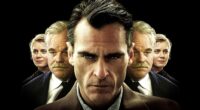

You’re obviously a big fan of Clint (me less so) and Kevin. In regard to the latter, a newbie film with a definite classic vibe is 2003’s OPEN RANGE, which I actually prefer to DANCES. I’d also find a place somewhere for Altman’s McCABE & MRS. MILLER, which falls between your categories. Often referred to as a “revisionist Western,” it locates the remnants of late-19th-Century West in the Northwest of 1902 and in a way that captures (and critiques) much of the traditional narrative for a new and more skeptical generation. I realize, though, you’re sensibly trying to maintain some boundary lines because the category is filled with myriad possibilities.